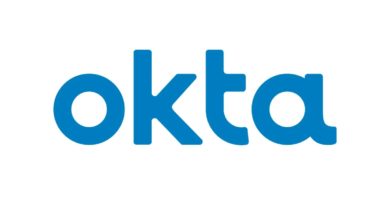The New Search, Content & Social Marketing Sweet Spot
Columnist Jim Yu asserts that brands seeking to create successful digital campaigns need to focus on fostering collaboration between search, social and content teams.
Developing a successful digital marketing campaign requires more than fantastic content, solid search engine optimization (SEO), or a presence on the major social platforms. It is when these different components work together, finding that sweet spot between the three of them, that brands begin to shine online.
According to a study completed at BrightEdge (my employer), as much as 51% of a site’s traffic originates as organic traffic. That means the majority of the people who find your company are coming from major search engines. While SEO can help a website attract more visitors via higher rankings in search engines, it is only when the content provides value and quality that the visitor stays. If organic search is the driver of website traffic, then content is the fuel that keeps the traffic rolling.
Similarly, social media provides brands with vast potential for expanding brand reach and influence — but it is only when the brand’s content is viewed as worth sharing that social media marketing techniques are successful. Social can impact search factors, including traffic, while indexing of social content may soon provide companies with even more opportunities for reaching their intended audience.
Content, social, and search must work together to successfully help the brand achieve its goals.
Coordinating The Goals Of The Marketing Campaign
Well written, high-value content can power company growth and help move the business forward. While content is critical for driving business, it can also accomplish a wide range of other objectives, such as increasing brand reach and building trust.
Companies need to establish clear objectives for the content they develop and coordinate these ideas with the rest of the marketing department, including the social and search marketing teams. At SMX London, we covered the characteristics of effective team collaboration, including:
- The teams have a joint mindset.
- They have the ability to spot trends within the data and capitalize on them.
- They can identify and use strong keywords.
- They leverage social media to create messages across the various platforms.
When the different teams are able to work together, they will be able to accurately measure their progress and improve their bottom line.
The Role Of Content & Organic Search
High-quality content is the foundation for building a digital marketing campaign. Content can take a variety of different forms beyond just written text, too — blog posts and articles remain popular, but alternate types of content, such as videos or infographics, have become increasingly common.
Content is also growing at unprecedented rates. An estimated 90 percent of global data has been produced just in the past two years. The steep competition means that simply having content is no longer enough — now, it is quality content that captures the attention of search engines and readers alike.
Content should always be produced with performance in mind; it must be optimized to attract attention (from both humans and search engines alike) while also ensuring a positive user experience to prevent high bounce rates. Pairing content with search means:
- including occasional keywords in the content to communicate the message to search engines
- including keywords in the page title and URL
- writing a helpful and keyword inclusive meta description
- including alt tags on images
- using features such as headings and bullets to make content easy to read
It also means realizing that the intersection of content and search depends upon building relationships with readers. These relationships form when companies repeatedly fulfill the needs of their visitors by providing high value, informative pieces rather than just trying to sell.
Content is also the common, driving force behind paid, owned and earned media. By using paid media, such as advertisements on search engines or social media, brands can get their name in front of their ideal audience. These click and impressions, however, will only serve a purpose if the brand can successfully engage the reader with intriguing content.
Similarly, when the company’s owned media, such as websites and social sites, are found through organic search, high bounce rates will plague the brand unless the content offers immediately obvious value.
As content attracts positive attention because of the paid and owned media, earned media will follow. Earned media, which serves as a vouch of confidence from those who have already explored your content, works as free advertising in the form of shares, reviews, and positive messages throughout the digital landscape.
Content, and its relationship with search and social, drives this type of attention and can transform marketing campaigns into success.
The Relationship Between Search & Social
The sheer amount of content that has been created and shared on various platforms has grown at unfathomable rates in recent history.
To get an idea of just how intense this growth is, go and check out “The Internet in Real Time.” In just the past 45 seconds (as of the time of this writing), there have been 1015830 GB of data transferred over the Internet. This includes 260415 Google +1s, 495 new Twitter accounts, 256500 tweets, 90 hours of video uploaded on YouTube, and 2348820 likes on Facebook.

Screenshot source: http://pennystocks.la/internet-in-real-time/
Google’s indexing also now stretches beyond basic published content. The search engine giant has recently begun featuring tweets prominently in its results pages, which means that the reach of content published on Twitter will grow. Under this plan, tweets will be shown to users when they seek information about a brand. Companies now will have an opportunity to expand their reach and engage with those interested in the brand through their social content.
As content gains traction and attention, its power will begin to grow exponentially. The Google algorithm takes into account traffic rates as well as bounce rates. Promoted content that draws fresh traffic through search and social — and is high in quality to reduce bounce rates — will naturally rise in SERPs. When a piece goes viral on social media, the impact on traffic can be astounding.
An interesting study conducted by the New York Times Customer Insight Group found that the content people shared depended largely on how people wanted to be perceived as well as their relationships with others. The group found five key factors that influenced whether or not a piece would be shared:
- It appeals to the desire of readers to connect with each other.
- The brand has a strong reputation of trust.
- The content is clear and simple but with a strong message.
- The content appeals to the sense of humor of readers.
- The content creates a sense of urgency.
Brands looking to grow must understand these user motivations and incorporate them into their marketing goals. Content that fits into these categories for the ideal consumer base will be shared across social media platforms, driving traffic and increasing the brand’s reach, influence and engagement. Creating viral content can be fantastic for introducing new audiences to the company, but it must effectively speak to these user motivations while also meeting the needs of the brand.
Companies can also learn about the factors that drive their competitors to success by monitoring their social signals. When they see how others’ content performs, they will be able to compare it to their own performance and results. This will help to identify areas of improvement.
Tiny Prints is an excellent example of success in this area. The company used Twitter to build engagement, leveraging keywords and URLs that were popular on the fast-paced social site. As follower engagement increased by 3x over a four-week period, the company also experienced a 47 percent increase in organic search rankings. (Note: Tiny Prints is a client.)
Measuring What Matters
The critical component that many professionals neglect when developing their marketing campaign is establishing meaningful success metrics. Understanding the impact of social, search and content must go beyond looking at the number of likes, shares, or page visits obtained.
Instead, monitor how the different arms of the campaign — search, social and content — are contributing to the overall marketing goals. Rather than trying to analyze each component individually, take a holistic look at how they work together and contribute to objective and measurable results such as market share, conversions, and revenue growth.
The Steps To Finding The Sweet Spot Between Search, Social & Content
- Determine the goals for the content and ensure that the entire marketing team is on the same page.
- Define the metrics needed to measure progress.
- Develop content with SEO in mind.
- Evaluate the social performance of your competitors to see where you need to improve.
- Use your social media assets to build engagement, and create high quality content to gain exposure.
- Gauge your success and modify your work as needed.
Marketing continues to evolve at a shocking rate. Those who want to form successful digital campaigns need to focus on finding the sweet spot between search, social and content. Each of these three arms can do awesome things for driving content and increasing the brand potential, but when they are brought together for a united purpose, their power will be incredible.



